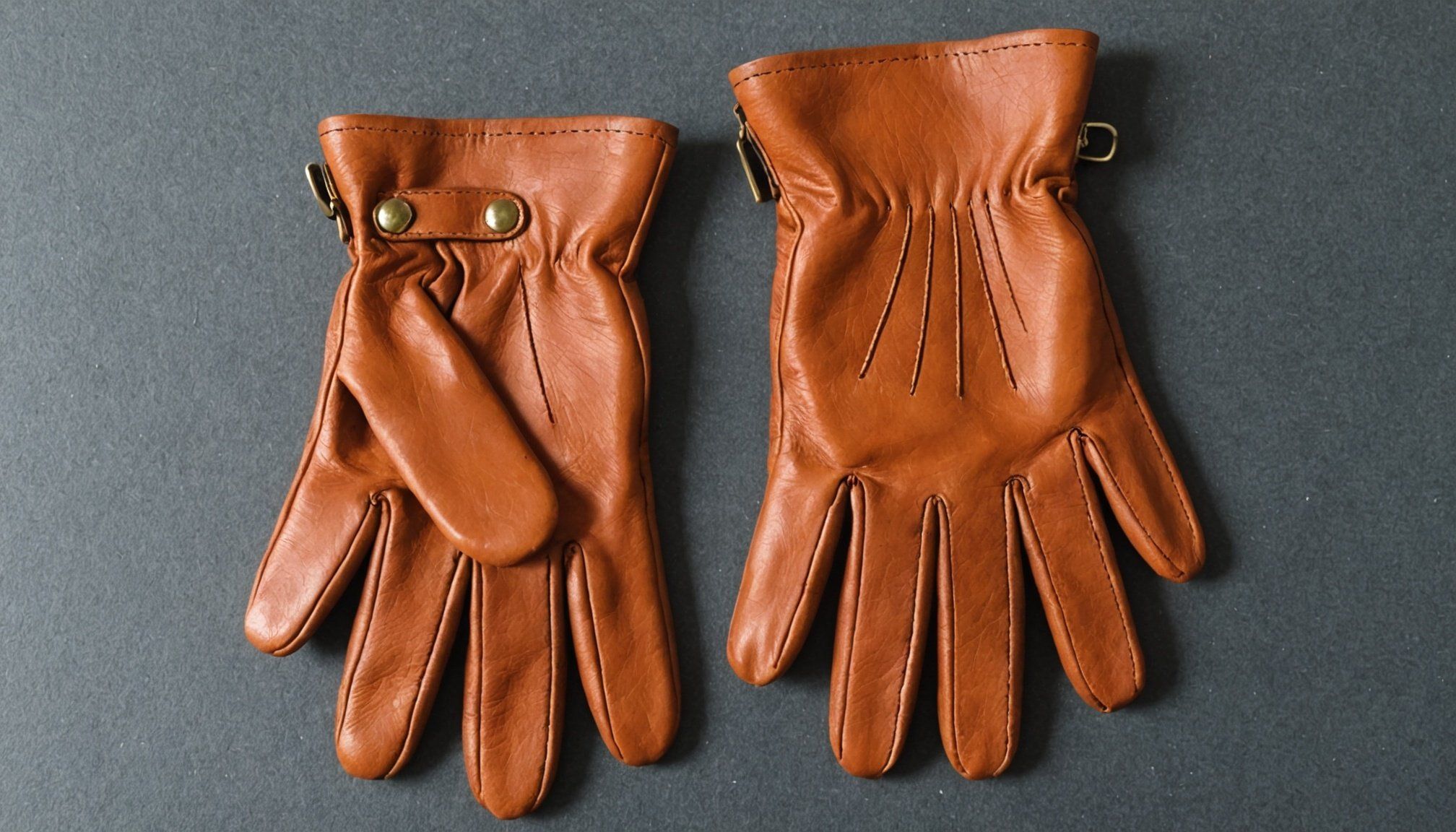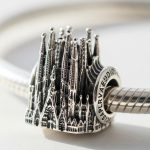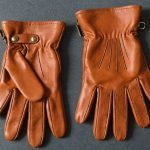The Ultimate Guide to Restoring Vintage Leather Gloves Found in UK Thrift Stores
Restoring vintage leather gloves can be a rewarding and creative project, especially when you find those hidden gems in UK thrift stores. Here’s a comprehensive guide to help you bring your vintage leather gloves back to their former glory.
Preparing Your Leather Gloves for Restoration
Before you start the restoration process, it’s crucial to prepare your leather gloves properly. Here are the steps you need to follow:
Also to see : Explore the uk’s chicest cities: a comprehensive guide to distinctive fashion boutiques
Cleaning the Leather
To begin, you need to clean the leather to remove any dirt, dust, or grime that may have accumulated over time. Use a soft, damp cloth to gently wipe down the surface of the gloves. For more thorough cleaning, you can use a mild soap solution or saddle soap.
- Dip a soft, lint-free cloth into the soap solution or warm water with a small amount of saddle soap.
- Wring the cloth out lightly to avoid soaking the leather.
- Wipe down the gloves using firm, circular motions.
- Rinse the cloth and repeat the process if necessary.
- Once cleaned, use a clean, damp cloth to remove any remaining soap and let the gloves air dry in a cool, dry place[1].
Removing Deep Stains
If your gloves have deep stains, you may need to use a more specialized method. For pigmented leather, diluting rubbing alcohol can be effective.
In the same genre : Elegant sagrada familia charms : parfaits pour votre bracelet pandora
- Dilute rubbing alcohol with water.
- Apply the solution to the stain using a lint-free cloth.
- Perform a patch test on an inconspicuous area first to prevent staining.
- Rinse the gloves thoroughly after applying the rubbing alcohol and ensure all soap is removed[1].
Repairing and Fixing the Leather
Once your gloves are clean, it’s time to address any damage or wear.
Small Scratches and Tears
For small scratches on soft leather, you can often repair them by rubbing the area with your finger in circular motions. For more significant damage, you’ll need a leather repair kit.
- Purchase a leather repair kit, which can be found online or in craft stores.
- Apply a leather repair compound using a sponge to bind the leather fibers together.
- Allow the leather to air dry and repeat the process up to five times or until you’re happy with the outcome.
- If necessary, use a blowdryer on a medium setting to heat the scratched area and rub it with your free hand to bring back the dyes[1].
Deep Cleaning Techniques
If your gloves are heavily soiled, you may need to use deeper cleaning methods.
- Use pH-balanced leather cleaners to remove oils, dirt, and stains without damaging the leather.
- For heavily soiled gloves, consider leather shampooing. Dilute the shampoo according to the manufacturer’s instructions and use a sponge or soft brush to gently scrub the leather. Rinse with a clean, damp cloth and let the gloves air dry[1].
Dyeing and Color Restoration
If your vintage gloves have faded or lost their original color, you might want to consider dyeing them.
Preparing to Dye Leather
Before dyeing, it’s essential to clean and rehydrate the leather.
- Wipe off any lingering dust and grime with a dry, smooth cloth.
- Remove any body oil using a soft, clean cloth or a deglazer.
- Rehydrate the leather by applying a small amount of oil (like mink oil or neatsfoot oil) and spreading it evenly with a smooth cloth. Avoid using leather conditioners before dyeing as they can prevent the dye from penetrating the leather[3].
Applying the Dye
Use soft cotton rags to apply the dye on flat surfaces and Q-tips for hard-to-reach areas.
- Apply the dye in multiple thin layers, allowing each layer to dry before applying the next.
- Use circular motions to ensure even coverage.
- Once you’ve achieved the desired color, let the gloves dry completely before conditioning them[3].
Conditioning and Protecting the Leather
Conditioning is a crucial step in restoring and maintaining the health of your leather gloves.
Regular Conditioning
Establish a routine for cleaning and conditioning your leather gloves.
- Use a soft, dry cloth to wipe down the gloves and remove debris and dust.
- Apply a leather conditioner periodically to replenish the moisture and retain the suppleness of the leather. Follow the manufacturer’s instructions for how often to condition the gloves[1].
Post-Dye Conditioning
After dyeing, it’s essential to condition the leather to restore moisture and maintain its quality.
- Apply a leather conditioner or finisher to rehydrate and strengthen the leather fibers.
- Let the gloves dry overnight after conditioning.
- Consider buffing the leather with a soft cloth, horsehair brush, or soft cotton rag to achieve a glossy finish and smooth out the texture[3].
Lightening Leather (If Necessary)
If you want to lighten the color of your gloves, there are several methods you can use, each with its own risks and benefits.
Methods to Lighten Leather
Here are some common methods to lighten leather:
| Method | Description |
|---|---|
| Soap and Warm Water | Use saddle soap and warm water to clean and lighten small areas. |
| Natural Methods | Expose the leather to sunlight or use a vinegar and water solution. |
| Oxalic Acid | Mix oxalic acid with water and apply carefully, then rinse and dry. |
| Bleach | Use a mild bleach solution, but be cautious due to potential risks. |
| Sanding | Remove the top layer of leather to expose a lighter shade beneath. |
| Neatsfoot Oil or Mineral Salts | Mix Neatsfoot oil with rubbing alcohol or use a mineral salts solution. |
- Always test any lightening method on a small, inconspicuous area first to avoid irreversible damage.
- Wear gloves and protective eyewear when using chemical solutions.
- After lightening, moisturize and condition the leather to maintain its texture and durability[2].
Tips and Tricks for Restoration
Here are some additional tips to keep in mind when restoring your vintage leather gloves:
Protective Gear
When using chemical solutions or repair products, make sure to wear protective gloves and eyewear to prevent harm to yourself and your leather.
Workspace Preparation
Lay down protective items like towels, plastic sheeting, and newspaper underneath your gloves to avoid making a mess. Use old clothes and protective gloves during the repair process.
Testing and Patching
Always perform a patch test on an inconspicuous area before applying any cleaning, dyeing, or lightening solutions to ensure you don’t damage the leather.
Buffing and Finishing
After dyeing or conditioning, buff the leather with a soft cloth or horsehair brush to achieve a glossy finish and smooth out the texture. Consider applying a leather finisher or sealing to protect and maintain the leather for a longer time[3].
Where to Find Vintage Leather Gloves
If you’re on the hunt for vintage leather gloves, here are some places to check out:
Thrift Stores
Thrift stores in the UK are treasure troves for vintage items, including leather gloves. Keep an eye out for unique and well-made pieces that just need a bit of restoration.
Flea Markets
Flea markets and second-hand markets often have a variety of vintage items, including clothing and accessories like leather gloves.
Online Stores
Online stores like eBay, Amazon, and specialized vintage clothing stores can also be great resources for finding vintage leather gloves.
Vintage Clothing Stores
Dedicated vintage clothing stores often carry a selection of high-quality, pre-loved items, including leather gloves.
Customer Service and Online Resources
If you’re unsure about any part of the restoration process, don’t hesitate to reach out to customer service or consult online resources.
Online Guides and Forums
Websites and forums dedicated to leather care and restoration can provide valuable tips and advice from experienced enthusiasts.
Manufacturer Instructions
Always follow the manufacturer’s instructions for any cleaning, dyeing, or conditioning products you use to ensure the best results and to avoid damaging your leather gloves.
Restoring vintage leather gloves is a rewarding project that requires patience, the right tools, and a bit of know-how. By following these steps and tips, you can bring your vintage gloves back to life and enjoy them for years to come.
Detailed Checklist for Restoration
Here is a detailed checklist to help you through the restoration process:
-
Clean the Leather:
-
Use a soft, damp cloth to wipe down the gloves.
-
Apply a mild soap solution or saddle soap if necessary.
-
Rinse and air dry the gloves.
-
Remove Deep Stains:
-
Dilute rubbing alcohol for pigmented leather.
-
Apply the solution and rinse thoroughly.
-
Repair Small Scratches and Tears:
-
Use a leather repair kit.
-
Apply a leather repair compound and let it air dry.
-
Repeat as necessary.
-
Dye the Leather (if needed):
-
Clean and rehydrate the leather.
-
Apply the dye in multiple thin layers.
-
Condition the leather after dyeing.
-
Lighten the Leather (if needed):
-
Choose a suitable method (soap and warm water, natural methods, oxalic acid, bleach, sanding, etc.).
-
Test on an inconspicuous area first.
-
Condition the leather after lightening.
-
Condition and Protect the Leather:
-
Apply a leather conditioner periodically.
-
Buff the leather for a glossy finish.
-
Consider applying a leather finisher or sealing.
By following this guide, you’ll be well on your way to restoring your vintage leather gloves to their former glory, making them look and feel like new again.
Table: Comparison of Leather Restoration Methods
| Method | Description | Risks and Considerations |
|---|---|---|
| Soap and Warm Water | Clean and lighten small areas using saddle soap and warm water. | Avoid hot water and harsh chemicals. |
| Natural Methods | Expose to sunlight or use a vinegar and water solution. | Monitor closely to avoid overexposure. |
| Oxalic Acid | Mix with water and apply carefully, then rinse and dry. | Wear gloves and protective eyewear. |
| Bleach | Use a mild bleach solution. | High risk of damage if not done correctly. |
| Sanding | Remove the top layer to expose a lighter shade beneath. | Recommended only for experienced leatherworkers. |
| Neatsfoot Oil or Mineral Salts | Mix with rubbing alcohol or use a mineral salts solution. | Leave in the sun or soak, then rinse and dry. |
Quotes from Experts
- “Leather products often become worn over time if you haven’t looked after them. But don’t despair, you can restore them to get them looking almost brand new with a bit of effort.”[1]
- “Proper preparation, including cleaning and rehydrating the leather, is crucial for successful dyeing.”[3]
- “Always test any lightening method on a small, inconspicuous area first to avoid irreversible damage or undesired results.”[2]
By combining these tips, methods, and resources, you’ll be able to restore your vintage leather gloves and enjoy them for many years to come. Happy restoring





















